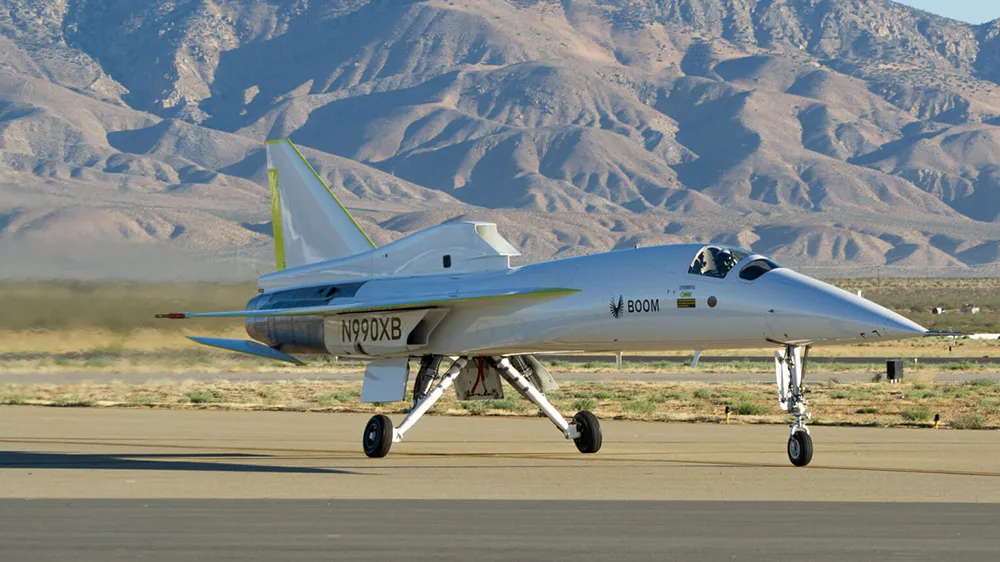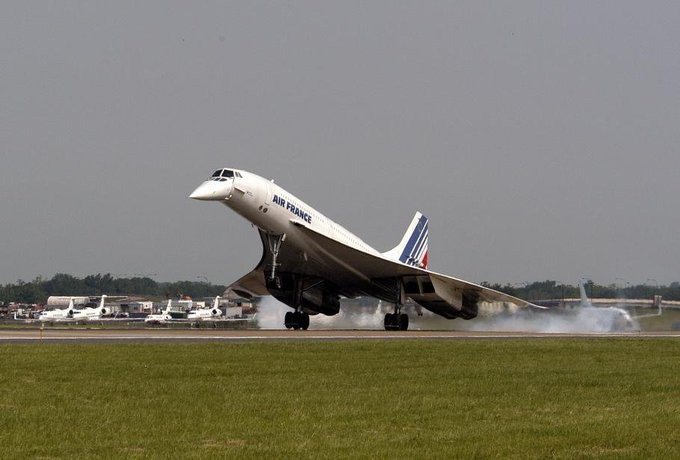Startup Used Formula 1’s Secret To Build Supersonic Jet Flies New York to London in 3.5 Hours
In a world where speed is often synonymous with progress, a small startup with just 140 employees has made a groundbreaking leap by creating the first American supersonic jet to break the sound barrier since the retirement of the Concorde.

This startup, Boom Supersonic, has taken the essence of speed from the world of Formula 1 racing and applied it to the skies, crafting an aircraft that flies faster than sound.
Here’s the story of how Boom will potentially change the face of transatlantic travel, cutting the time from New York to London down to just 3.5 hours.
The Breakthrough of Boom Supersonic

On January 30, 2025, an event that went relatively unnoticed by the mainstream but was monumental in aviation history occurred. A startup, with a team no larger than that of a small tech company, achieved what giants like Boeing and Lockheed Martin could not. They built an aircraft that surpassed the speed of sound, a feat not accomplished by an American company in commercial aviation for decades.
Revolutionary Technologies Behind Boom
The success of Boom Supersonic can be attributed to four key technological breakthroughs:

- AR Vision System: This innovative system replaced the heavy-moving nose of the Concorde, providing pilots with enhanced visibility without the added weight.
- Carbon Fiber Construction: By using carbon fiber, Boom made their planes 70% lighter than traditional aircraft, significantly reducing fuel consumption and increasing efficiency.
- Digital Aerodynamics-Optimized Design: Utilizing advanced computational fluid dynamics, Boom crafted an aircraft design optimized for supersonic flight, enhancing performance and reducing drag.
- Revolutionary Engine Design: Their engine technology converts the supersonic air entering the engine into subsonic speeds, allowing for efficient energy conversion and less wear on the engine components.
A Historical Perspective

To understand the significance of Boom’s achievement, we must look back to the 1960s, a time when the race for supersonic flight was at its peak. Countries like Russia, the US, Britain, and France were all vying to break the sound barrier for commercial purposes.

The Soviet Tupolev Tu-144 and the Anglo-French Concorde were the only two to succeed, but their stories ended in economic failure and tragedy for the Concorde. Despite these setbacks, the dream of supersonic travel never faded.
The Concorde’s Legacy

The Concorde was a marvel, flying at Mach 2 from 1976 until its retirement in 2003. However, with ticket prices at $20,000 (equivalent to $66,000 today) and only 14 planes ever in service, it was a luxury few could afford, relying heavily on government subsidies to stay aloft.
Why Innovation Stalled

After the Concorde, supersonic innovation hit a roadblock. The reasons were clear: the immense financial risk, government bans on overland supersonic flights due to sonic booms, the high cost of technology, and a perceived small market for such travel.
Blake Scholl: The Visionary Behind Boom

Enter Blake Scholl, the founder of Boom Supersonic. Before starting Boom, Scholl worked at Groupon after his startup was acquired by them. However, his true passion was aviation, a love affair that began when he was just 19, often renting small planes for leisure flights. His curiosity led him to question why commercial planes couldn’t fly faster, prompting him to delve into self-taught studies in calculus, fluid dynamics, and physics. Using a simple Google Sheet, Scholl modeled how carbon fiber could revolutionize supersonic aircraft by making them cheaper and lighter.
Paul Graham’s Investment

Paul Graham, a renowned investor, has put more money into Boom than any other startup in his investment history, highlighting the significance he places on Boom’s potential to revolutionize American aviation.
The Birth of Boom

With half of his savings from Groupon, Scholl funded the initial stages of Boom. Before any external investment, he had a team of 10 working out of his basement. Their dedication paid off when, on January 28, 2025, the XB-1 prototype reached Mach 1.05 in just 11 minutes, a testament to what a small, focused team could achieve.
The Power of Carbon Fiber

Boom’s secret? Carbon fiber. This material, also used in Formula 1, makes their jets 70% lighter than the Concorde, leading to a 75% reduction in fuel consumption. This efficiency is crucial for the economic viability of supersonic travel.
Commercial Prospects and Preorders

Airlines are already showing interest. United has ordered 15 jets, American Airlines wants 20, and now Japan Airlines has joined the queue. With total preorders amounting to $25 billion, Boom has enough backing to sustain operations for the next 5 years. The cost? A round trip from New York to London in just 3.5 hours for about $5,000, a significant reduction from Concorde’s fares.
The story of Boom Supersonic is not just about speed; it’s about innovation, perseverance, and the reimagining of what’s possible in air travel. With their groundbreaking technology and business model, Boom is set to redefine how we think about crossing the Atlantic, bringing us closer to a future where speed and efficiency are not just for the elite but accessible for business class travelers. As we watch this small company break barriers, we’re reminded that sometimes, the most significant advancements come from the most unexpected places.